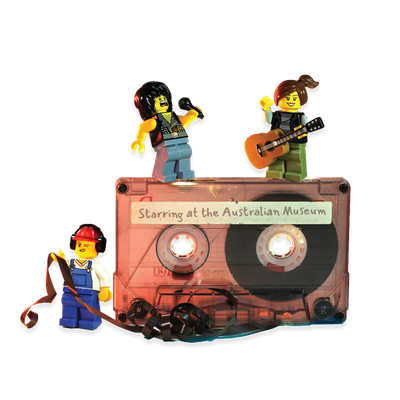Your search returned 19 results
By Page Type
By Tag
- All
- fish (966)
- blog (698)
- fishes of sydney harbour (400)
- First Nations (293)
- Blog (236)
- AMRI (169)
- archives (165)
- Aboriginal and Torres Strait Islander (135)
- Eureka Prizes (131)
- insect (126)
- Ichthyology (125)
- geoscience (109)
- minerals (102)
- climate change (98)
- podcast (94)
- Fish (91)
- Anthropology (89)
- International collections (80)
- Minerals Gallery (78)
- wildlife of sydney (78)
- Labridae (77)
- frog (73)
- gemstone (70)
- history (63)
- photography (63)
- staff (61)
- Mollusca (60)
- gem (59)
- Birds (58)
- education (57)
- Gems (56)
- Indonesia (56)
- AMplify (54)
- shark (54)
- people (53)
- exhibition (51)
- earth sciences (50)
- past exhibitions (50)
- Gobiidae (48)
- Pomacentridae (45)
- sustainability (45)
- Serranidae (44)
- science (43)
- lifelong learning (42)
- Earth and Environmental Science (41)
- Syngnathidae (41)
- Ancient Egypt (40)
- Bali (40)
- bird (40)
- dangerous australians (40)
-
Fossils in Naracoorte, SA
https://australian.museum/learn/australia-over-time/fossils/sites/naracoorte/Pleistocene fossil vertebrate deposits of Victoria Fossil Cave at Naracoorte are considered to be Australia's largest and best preserved.
-
Fossils in Lightning Ridge, NSW
https://australian.museum/learn/australia-over-time/fossils/sites/lightning-ridge/Deposits at Lightning Ridge yield some of the rarest, most beautiful and precious fossils in the world.
-
Fossils in Bluff Downs, QLD
https://australian.museum/learn/australia-over-time/fossils/sites/bluff-downs/Bluff Downs is recognised to be one of the most significant fossil sites of Pliocene age in Australia.
-
How do fossils form?
https://australian.museum/learn/australia-over-time/fossils/how-do-fossils-form/For a plant or animal to become a fossil, a series of events must occur...
-
What are conodonts?
https://australian.museum/learn/australia-over-time/fossils/what-are-conodonts/What conodonts were remained a mystery for many years. These microfossils were variously thought to belong to annelid worms, arthropods, molluscs, chaetognaths (marine worms), fish (as teeth), and even plants. The discovery of an articulated 'conodont animal' was a significant breakthrough.
-
Preparing fossils, reconstructing the past
https://australian.museum/learn/australia-over-time/fossils/preparing-fossils-reconstructing-the-past/The very early stages of piecing together the animals and plants of the past involve removing their fossils from the rock and preserving them for study.
-
Fossil sites near Sydney
https://australian.museum/learn/australia-over-time/fossils/sites/fossil-sites-near-sydney/Fossils have been found at many sites near Sydney. Some of these are no longer accessible but coastal exposures still give the amateur collector ample chance of finding good fossils.
-
How are fossils found and excavated?
https://australian.museum/learn/australia-over-time/fossils/how-are-fossils-found/Finding fossils is a combination of hard work, chance and knowing where to look! Fossils are mostly found where sedimentary rocks of the right age are exposed, such as river valleys, cliffs and hillsides, and human-made exposures such as quarries and road cuttings.
-
What are some Australian dinosaurs?
https://australian.museum/learn/teachers/learning/australian-dinosaurs/Download a series of posters and learn about the dinosaurs that once roamed Australia.
-
Find out more
Tails from the Coasts
Special exhibition
On now![]()
-
Find out more
Burra
Permanent kids learning space
10am - 4.30pm![]()
-
Discover more
RELICS
Special Exhibition
Opens 16 August 2025![]()
-
Discover more
Minerals
Permanent exhibition
Open daily![]()





